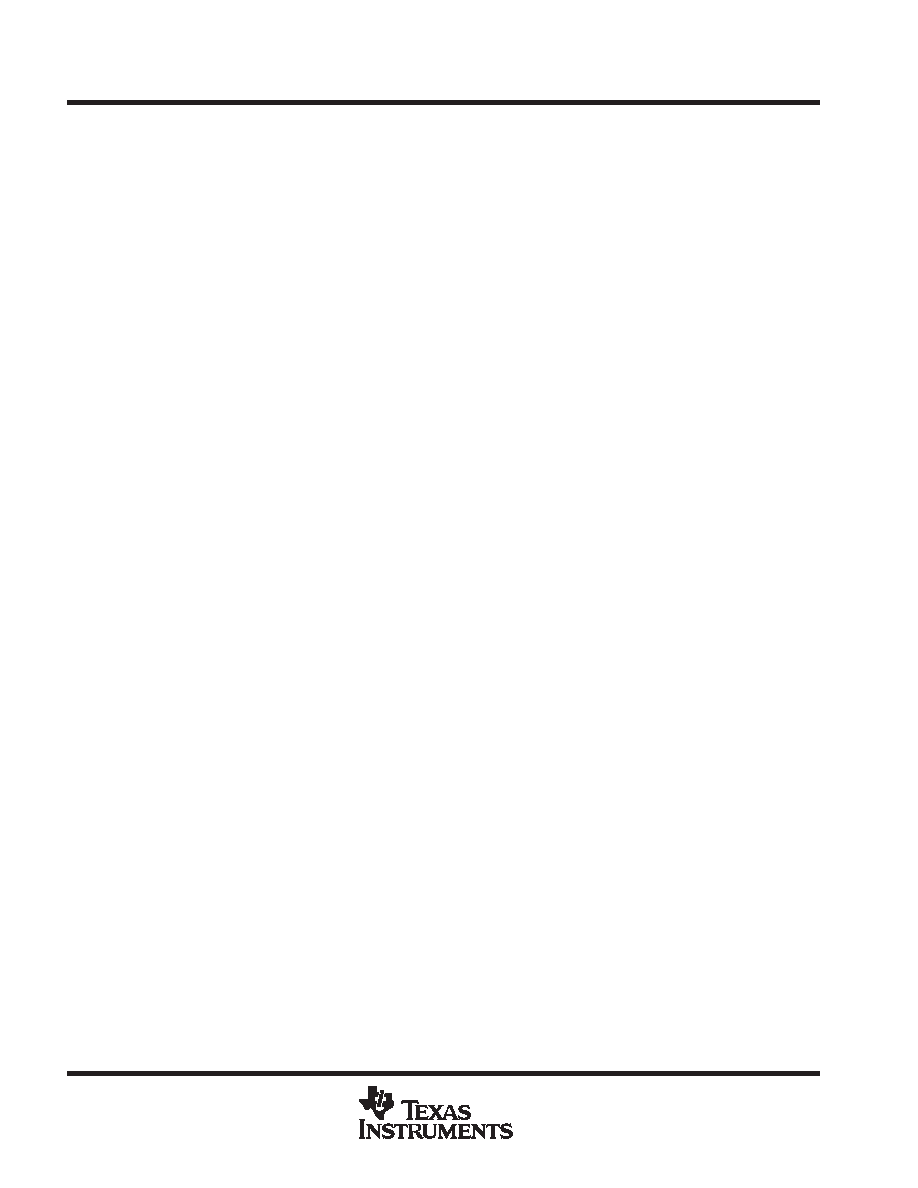- 您現(xiàn)在的位置:買賣IC網(wǎng) > PDF目錄43917 > LFC789D25CPWRE4 (TEXAS INSTRUMENTS INC) SPECIALTY ANALOG CIRCUIT, PDSO8 PDF資料下載
參數(shù)資料
| 型號: | LFC789D25CPWRE4 |
| 廠商: | TEXAS INSTRUMENTS INC |
| 元件分類: | 模擬信號調(diào)理 |
| 英文描述: | SPECIALTY ANALOG CIRCUIT, PDSO8 |
| 封裝: | GREEN, PLASTIC, TSSOP-8 |
| 文件頁數(shù): | 12/15頁 |
| 文件大小: | 422K |
| 代理商: | LFC789D25CPWRE4 |

LFC789D25
DUAL LINEAR FET CONTROLLER
SLLS565B MARCH 2003 REVISED SEPTEMBER 2004
6
POST OFFICE BOX 655303
DALLAS, TEXAS 75265
APPLICATION INFORMATION
MOSFET SELECTION: BENEFITS OF NMOS PASS ELEMENTS REVISITED
A great benefit of having an external pass element is that the control circuitry can be powered by a separate
supply (VCC), other than the one used as the input to the pass element (VPWR). This feature allows the use of
an NMOS pass element, which requires a positive VGS > VT for operation. With a separate VCC pin to the
controller, the voltage at the gate of the NMOS readily can exceed the voltage at the drain; thus, VGS easily can
exceed VDS + VT, allowing the NMOS to operate in the triode region (VDS ≥ VGS VT). In the triode region, VDS
can be very small, thus achieving very low dropout.
The external NMOS selected for the pass transistor has significant impact on the overall characteristics of the
regulator, as discussed in the following paragraphs.
D Maximum output current
A benefit of an external pass element is that the designer can size the NMOS to easily sustain the maximum
IOUT expected. This allows great flexibility, along with cost and space savings, because each regulator has its
pass element tailored to its individual needs. In addition, using an NMOS pass element allows for smaller size
(and subsequently, lower cost) than a PMOS element for the same current-carrying ability.
D Dropout
Choosing an NMOS with very low RDS(on) characteristics provides the regulator with very low dropout because
dropout will be
IOUT × RDS(on). This lower dropout also results in better efficiency and lower heat dissipation
in the pass element for a given IOUT.
D Maximum programmable output voltage and NMOS threshold voltage, VT
The maximum output voltage that can be regulated by the programmable regulator depends on the device’s
power supply (VCC) and threshold voltage (VT) of the NMOS. With the drive voltage tied to the gate and VOUT
connected to the source of the NMOS, a minimum VGS = VT must be maintained in order to maintain the
n-channel inversion layer. The maximum VOUT is calculated as follows:
VOUT = VS = VG VT
With VCC = 12 V and a corresponding worst-case gate drive voltage of 9 V, the highest achievable
VOUT = 9 V VT.
D Stability
A quality of the old npn regulators was their inherent stability under almost any type of load conditions and output
capacitors.
An
NMOS
regulator
has
the
same
benefit.
Thus,
capacitor
selection
and
equivalent-series-resistance (ESR) values are not needed for stability, but still should be chosen properly for
best transient response (see below).
capacitor selection
Cout: Although a minimum capacitance is not needed for stability with an NMOS pass device, higher capacitance
values improve transient response. In addition, low-ESR capacitors also help transient response. Tantalum or
aluminum electrolytics can be used for bulk capacitances, while ceramic bypass capacitors can be used to
decouple high-frequency transients due to their low ESL (equivalent series inductance).
Cin: Input capacitors placed at the drain of the NMOS pass transistor (VPWR) help improve the overall transient
response by suppressing surges in VPWR during fast load changes. Low-ESR tantalum or aluminum electrolytic
capacitors can be used; higher capacitance values improve transient response. A 0.1-
F ceramic capacitor can
be placed at the VCC pin of the LFC789D25 to provide bypassing.
相關(guān)PDF資料 |
PDF描述 |
|---|---|
| LGR2540-2 | 2-OUTPUT 25 W AC-DC REG PWR SUPPLY MODULE |
| LHR1001-2 | 1-OUTPUT 10 W AC-DC REG PWR SUPPLY MODULE |
| LHR1501-2 | 1-OUTPUT 10 W AC-DC REG PWR SUPPLY MODULE |
| LHR1301-2 | 1-OUTPUT 10 W AC-DC REG PWR SUPPLY MODULE |
| LHR2020-2 | 2-OUTPUT 10 W AC-DC REG PWR SUPPLY MODULE |
相關(guān)代理商/技術(shù)參數(shù) |
參數(shù)描述 |
|---|---|
| LFC789D25CPWRG4 | 功能描述:低壓差控制器 - LDO Dual Lin FET Cntrlr RoHS:否 制造商:Micrel 最大輸入電壓:5.5 V 輸出電壓:Adjustable 輸出電流:10 mA 負載調(diào)節(jié): 輸出類型:Adjustable, Fixed 輸出端數(shù)量:1 最大工作溫度:+ 125 C 安裝風格:SMD/SMT 封裝 / 箱體:SOT-23-6 |
| LFCB0001X | 功能描述:控制開關(guān) LFCB0001X RoHS:否 制造商:Omron Industrial 控制類型:Emergency Stop 觸點額定值:5 A at 125 VAC 觸點形式:1 Form B (SPST-NC) 電壓額定值: 電流額定值: 執(zhí)行器:Pushbutton 照明:N 安裝風格: |
| LFCB0002X | 功能描述:控制開關(guān) LFCB0002X RoHS:否 制造商:Omron Industrial 控制類型:Emergency Stop 觸點額定值:5 A at 125 VAC 觸點形式:1 Form B (SPST-NC) 電壓額定值: 電流額定值: 執(zhí)行器:Pushbutton 照明:N 安裝風格: |
| LFC-C/50 | 制造商:CAIG Laboratories Inc 功能描述:Cloth, Cotton / Cotton Lint-free Cloth |
| LFCC400ML | 制造商:Electrolube 功能描述:COATING, CONFORMAL, LEAD FREE |
發(fā)布緊急采購,3分鐘左右您將得到回復。